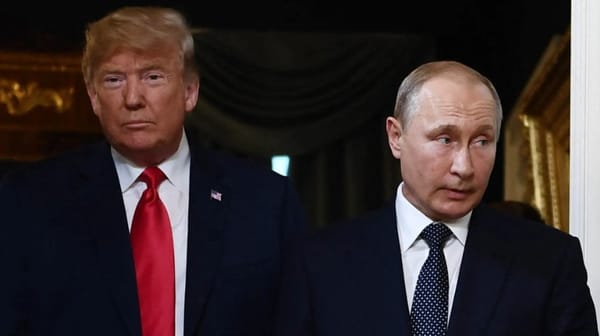Mass Protests Sweep Central Europe: A Challenge to Putin's Allies

Recent days have witnessed a surge of protests across Central Europe, particularly in Hungary, Serbia, and Romania. These demonstrations, drawing hundreds of thousands of participants, represent a significant challenge to leaders perceived as allies of Russian President Vladimir Putin. The events unfolding in these countries could have far-reaching implications for the region's political landscape and Russia's influence in Europe.
Hungary: Orban's Rule Under Pressure
In Budapest, an estimated 50,000 people gathered on March 15, 2025, to protest against Prime Minister Viktor Orban's 15-year rule[1]. The demonstration, coinciding with Hungary's national day, was organized by the opposition Tisza party, led by Peter Magyar. Magyar, a former member of Orban's Fidesz party, has emerged as a formidable challenger to the long-standing prime minister[1:1].
Key points of the Hungarian protests include:
- Magyar's call for change: The opposition leader declared that "Hungary is waiting for spring, together we will put an end to Orban's winter"[2]. This rhetoric resonates with a growing segment of the Hungarian population dissatisfied with Orban's governance.
- Pro-European stance: Magyar has pledged to integrate Hungary into a robust European framework, contrasting sharply with Orbán's skeptical stance toward the EU[3].
- Anti-corruption focus: The Tisza party aims to dismantle what it perceives as a deeply rooted system of corruption under Orban's administration[4].
- Electoral implications: Recent polls suggest a head-to-head race between Tisza and Fidesz, with some even showing Tisza slightly ahead - an unprecedented development in Hungarian politics over the last 15 years[1:2].
Orban, for his part, held a separate rally where he vowed to dismantle what he termed a global 'shadow army' of NGOs, journalists, and politicians aligned with the EU and liberal America[4:1]. This stance underscores the deepening divide between Orban's nationalist, pro-Russian policies and the pro-European opposition.
Serbia: Largest Anti-Government Rally in Recent Memory
Serbia witnessed what has been described as its largest anti-government demonstration in recent history on March 15, 2025. Over 100,000 people gathered in Belgrade to protest against President Aleksandar Vučić's administration[2:1].
Key aspects of the Serbian protests include:
- Anti-corruption focus: The demonstrations are primarily driven by allegations of corruption and mismanagement within Vučić's government[5].
- Catalyst event: The protests gained momentum following a tragic incident in November 2024, when 15 people died in a railway station collapse in Novi Sad[6]. This event has been seen as emblematic of broader issues of negligence and corruption.
- Student-led movement: The protests have been ongoing since November 2024, with students playing a significant role in organizing and sustaining the movement[2:2].
- Scale and intensity: The March 15 protest saw an estimated 275,000 to 325,000 participants, according to the Public Meeting Archive, potentially making it the largest demonstration in Serbia's history[6:1].
While Vučić is not considered a direct ally of Putin, he has fostered strong ties with Moscow and has refrained from imposing sanctions on Russia, complicating Serbia's relationship with the EU and its aspirations for membership[3:1].
Romania: Pro-EU Demonstrations Amid Political Uncertainty
In Bucharest, approximately 10,000 people gathered on March 16, 2025, waving EU and Romanian flags in a show of support for Europe and opposition to growing nationalist and anti-European sentiments[3:2].
Key elements of the Romanian situation include:
- Upcoming elections: Romania is set to repeat its two-round presidential election in May, following the cancellation of December's results due to allegations of Russian interference[3:3].
- Far-right concerns: The leader of the far-right Alliance for the Union of Romanians (AUR), George Simion, has claimed that "our vote was stolen," highlighting the tense political atmosphere[3:4].
- Pro-Kremlin candidate controversy: Supporters of Călin Georgescu, a pro-Kremlin candidate barred from participating in the upcoming vote, were present at the weekend protests[3:5].
- Geopolitical implications: The situation in Romania could potentially benefit Russia, with or without Georgescu's election, as it may jeopardize Romania's strategic ties with neighboring countries[3:6].
Broader Implications for Central and Eastern Europe
The simultaneous protests in Hungary, Serbia, and Romania reflect broader trends and challenges facing Central and Eastern European (CEE) countries:
- Shifting alliances: The potential fall of pro-Russian governments could significantly alter the geopolitical landscape of the region, potentially weakening Putin's influence in Europe[7].
- EU and NATO dynamics: The protests underscore the ongoing tension between pro-EU/NATO sentiments and more Russia-friendly policies in the region[5:1].
- Democratic backsliding concerns: The demonstrations highlight growing public discontent with perceived authoritarian tendencies and corruption in some CEE countries[5:2].
- Energy dependence: The incomplete energy transition in CEE countries, particularly their continued reliance on Russian gas, complicates the region's security calculations[5:3].
- U.S. disengagement concerns: The protests occur against a backdrop of uncertainty regarding the United States' future role in European security, adding urgency to discussions about European strategic autonomy[5:4].
Challenges and Future Prospects
As these protests unfold, several key challenges and potential outcomes emerge:
- Political fragmentation: The region remains divided in its strategic orientation, with some countries like Poland and the Baltic states taking a robust stance against Russian influence, while others, such as Hungary and Slovakia, maintain more pro-Russian attitudes[5:5].
- Economic considerations: The interplay between political change and economic stability will be crucial, particularly given the region's ongoing energy dependencies and development needs.
- EU cohesion: The outcome of these protests and potential political shifts could either strengthen or further complicate EU unity, particularly on issues related to Russia and regional security.
- Democratic resilience: The ability of these countries to navigate political change through democratic processes will be a key test of the strength of their institutions.
- Russian response: How Moscow reacts to potential losses of allies in the region could have significant implications for regional stability and security.
Conclusion
The wave of protests sweeping across Central Europe represents a critical juncture for the region's political future and its relationship with Russia. As citizens in Hungary, Serbia, and Romania voice their discontent with current leadership and express pro-European sentiments, the potential for significant political shifts looms large.
These developments could reshape the geopolitical landscape of Central and Eastern Europe, potentially weakening Putin's influence in the region and strengthening ties with the EU and NATO. However, the outcomes remain uncertain, and the coming months will be crucial in determining whether these protest movements can translate into lasting political change.
As the situation continues to evolve, it will be essential to monitor not only the immediate political consequences in each country but also the broader implications for regional stability, European integration, and the ongoing negotiation of power dynamics between Russia and the West. The resilience of democratic institutions, the effectiveness of anti-corruption efforts, and the ability to address underlying economic and social challenges will all play critical roles in shaping the future of Central and Eastern Europe.
https://www.eunews.it/en/2025/03/17/the-two-demonstrations-in-budapest-orban-vs-magyar-the-opposition-leader/ ↩︎ ↩︎ ↩︎
https://ukrainetoday.org/people-are-tired-of-putins-friends-serbia-and-hungary-are-in-the-fire-of-heated-protests-will-the-kremlin-lose-its-allies-in-europe/ ↩︎ ↩︎ ↩︎
https://www.newsweek.com/russia-protests-hungary-romania-2045771 ↩︎ ↩︎ ↩︎ ↩︎ ↩︎ ↩︎ ↩︎
https://www.yahoo.com/news/protests-against-pro-russian-leaders-155944300.html ↩︎ ↩︎
https://www.atlanticcouncil.org/blogs/new-atlanticist/as-the-us-steps-back-in-europe-central-europe-must-step-up/ ↩︎ ↩︎ ↩︎ ↩︎ ↩︎ ↩︎
https://www.newsweek.com/europe-map-shows-mass-protests-against-putins-allies-2049558 ↩︎




